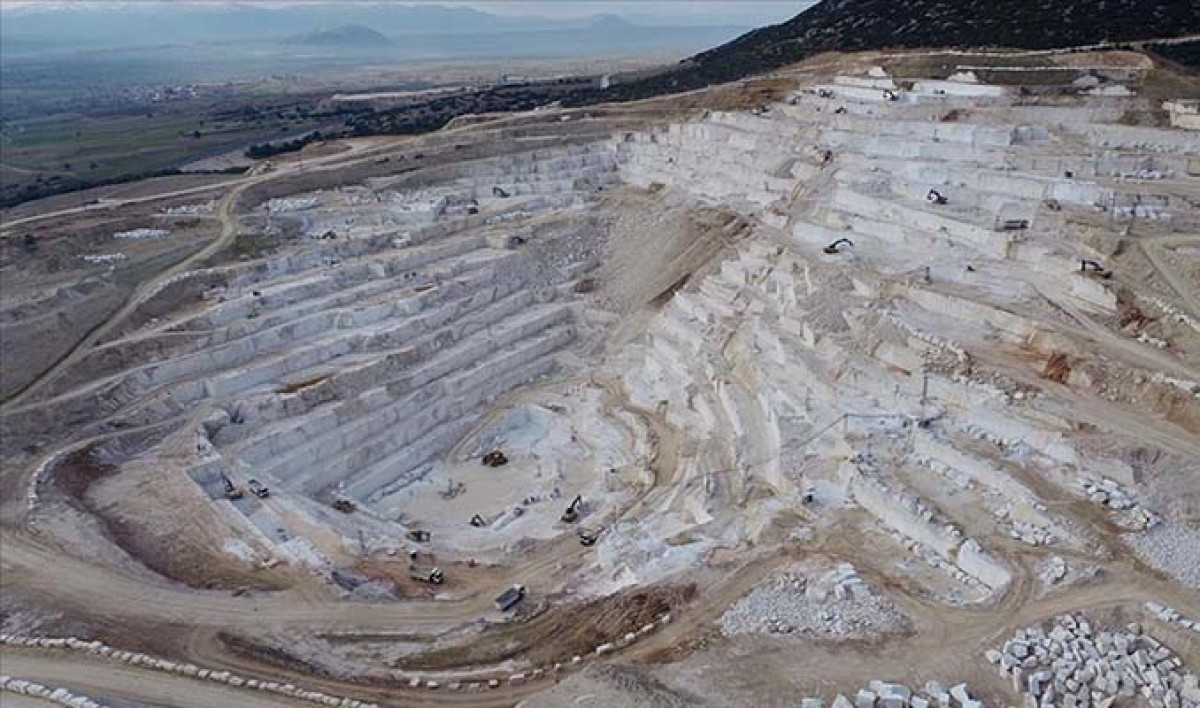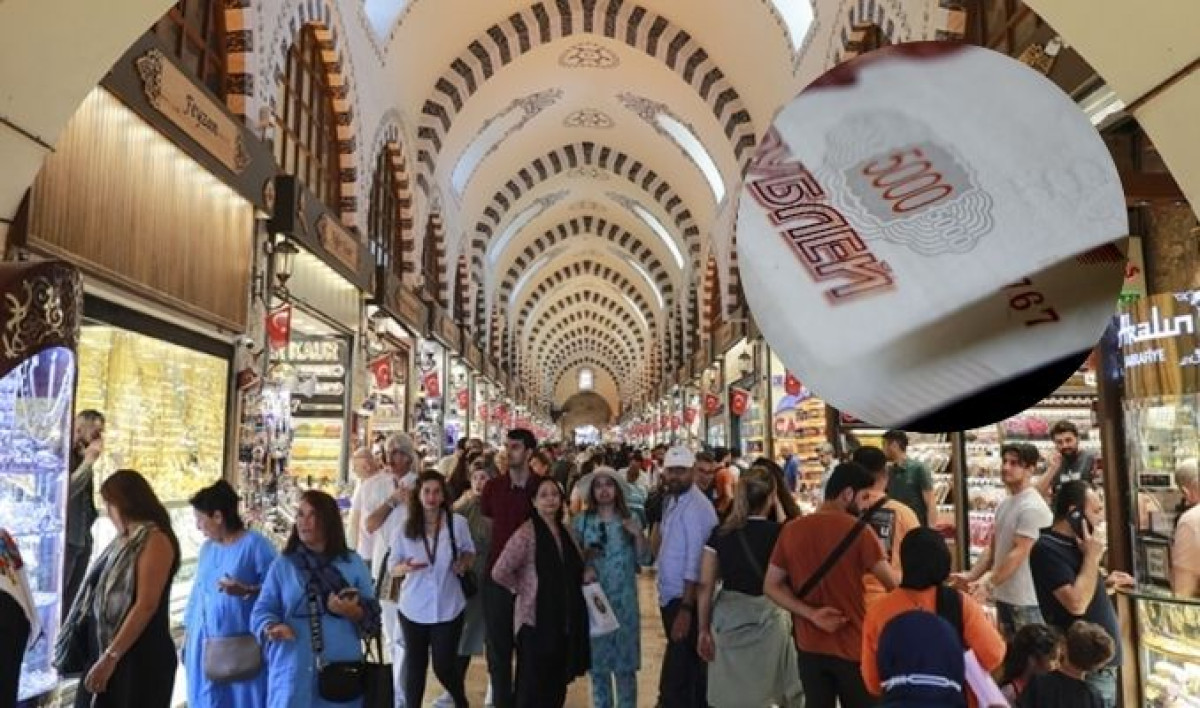Double View in the Cement Sector: Asset Growth and Deviating Share Prices
Turkey's cement sector presented a remarkable financial picture in the first half of the year. Companies in the sector have recorded significant active growth in their balance sheets thanks to their strong operational performance, while there has been a notable divergence in that this growth is reflected in stock prices. Analyses show that companies show increases in their asset size on a broad scale ranging from 10% to 80%. However, this fundamental strength in the capital markets did not translate into investor interest and positive price movement at the same rate for all companies.
This two-way view calls for an in-depth study of the industry. On the one hand, the financial and operational soundness of companies supports the potential to create long-term value. On the other hand, it shows that market pricing has certain sensitivities due to sectoral or macroeconomic factors. This presents a complex picture for investors that holds both opportunities and risks to watch out for.
The Meaning of Active Growth and Its Place in the Cement Sector
Its active growth refers to the increase in the size of a company's balance sheet and usually reflects a company's operational expansion, investments, increases in production capacity or strengthening its market share. In a capital-intensive sector such as cement, its active growth is an important indicator of the company's future production potential, revenue streams and profitability prospects. The fact that Turkish cement companies registered active growth in the first half of the year, ranging from 10% to 80%, indicates that the sector has a strong investment appetite overall and operational expansion strategies.
This growth usually occurs through new plant investments, modernization of existing facilities, technology integration, or strategic acquisitions. Thus, companies with high active growth have often taken significant steps towards consolidating their position in the sector, increasing their efficiency and gaining competitive advantage. This situation, from a long-term perspective, is a factor that increases the intrinsic value of companies and can potentially reflect positively on future valuations.
Divergence in Stock Prices: Who Won, Who Lost?
However, despite this strong picture in active growth, no movement was observed in the stock market at the same rate and direction. Some companies have shown success in both growing their assets and offering significant returns to their investors, while others have experienced declines in stock prices despite increasing their assets. This divergence reveals that the market reacts not only to the size of the balance sheet, but also to expectations regarding demand conditions, profitability expectations, competition in the sector and the overall economic outlook.
Winners: Price Performance Parallel to Active Growth
Cement companies, which have provided strong earnings to their investor since the New Year, have successfully come to the fore, reflecting their active growth in share prices. Companies that fall into this category have also crowned their operational success in the capital markets, consolidating investor confidence.
- NIBAS — Niğbaş Niğde Beton: Signified by its active growth of 35.37%, Niğbaş recorded a record 68.07% increase in its share price since the beginning of the year, showing one of the brightest performances in the sector. This strong dual performance demonstrates that the company is effectively increasing both operational efficiency and market value.
- BASCM — Baştaş Başkent Cement: Baştaş, which grew its assets by 17.41%, offered the stock investor a fairly high return of 46.09%, successfully transferring the strengthening of its balance sheet to the market value.
- BSOKE — Batısöke Cement: Batısöke Cement, which showed active growth above the sector average with 41.41%, became another company that satisfied investors with a 25.63% increase in the share price. This indicates that the company is effectively using its assets to create a positive perception in the market.
- CIMSA — Çimsa: Cimsa, one of the industry's leading players, took the lead with massive active growth of 79.63%, while recording a limited but positive increase in its share price of 7.90%. This indicates that the company is continuing its large-scale investments and expects these investments to be reflected in stock performance in the long term.
- OYAKC — Oyak Cement: Oyak Cement, which showed a share increase of 7.58% against strong active growth of 58.16%, was also among the companies that could translate its fundamental strength into positive market performance.
- AFYON — Afyon Cement: Afyon Cement, which increased its assets by 33.16%, posted a stable performance with a 4.75% increase in its share price.
- LMKDC — Limak Eastern Anatolia: Limak Doğu Anadolu Cement, which is notable for its impressive active growth of 67.67%, recorded a marginal share increase of 0.11%, although it remained in this category as it maintained its active growth and did not pull its share price into negative territory.
Losers: Negative Price Performance Despite Active Growth
The most striking divergence in the sector occurred in the group of companies that, despite registering active growth, lost their investors. While these companies showed an increase in assets on their balance sheets, their shares have lost value since the beginning of the year. This proves that market expectations and demand conditions can override the intrinsic power of companies.
- AKCNS — Akçansa: Although Akçansa, one of the important players in the sector, recorded a significant active growth of 38.08%, it was one of the cement stocks that lost the most value with a sharp drop in the share price of -20.54%. This indicates that the market has not yet fully priced the company's growth or is in other negative expectations.
- BUCIM — Bursa Cement: Bursa Cement, which increased its assets by 46.00%, meanwhile experienced a decline in its share price of -16.74%. This contrast creates a compelling picture for investors.
- KONYA — Konya Cement: Despite limited active growth of 9.88%, Konya Cement's share price declined by -16.34%. This suggests that the growth potential of the company is not sufficiently appreciated by the market.
- GOLTS — Göltas Cement: Göltaş Cement, which strengthened its balance sheet with active growth of 28.26%, experienced a loss in the value of the stock by -14.88%.
- NUHCM — Noah Cement: Noah Cement, which increased its assets by 24.74%, became one of the companies that remained under market pressure despite its fundamental strength, with the stock falling by -14.74%.
- CMBTN — Grass concrete: Çimbeton was also included in this group with a share price decrease of -14.38% against the active growth of 20.35%.
- YBTAS — Yibitaş Construction Material: Yibitaş, whose share price declined by -10.96% despite active growth of 33.74%, experienced difficulties in reflecting asset growth on the market.
- BTCIM — West Cement: Western Cement, which increased its assets by 30.40%, meanwhile faced a share price decline of -9.52%.
- CMENT — Cementas: Despite its active growth of 39.20%, Cimentaş experienced a share price loss of -8.35%, and showed that its active growth alone was not enough to attract investor interest.
- BOBET — Bosphorus Concrete: Boğaziçi Beton, which exhibited significant active growth of 49.77%, although it experienced a limited drop in its share price of -6.24%, it had difficulty converting its active performance into market performance.
Overall State of the Industry: Production Strong, Market Fragile
This table makes it clear that the cement sector is in a general contradiction. The sector stands on a strong foundation in terms of production and financial soundness. The active growth of companies is supported by elements such as capacity increases, modernization investments and efforts to expand market share, which give positive signals for operational efficiency and future growth potential.
However, on the market pricing side, a fragility and uncertainty are noticeable. Especially in companies whose shares are depreciating, the negative perception of the market or its cautious attitude towards the future prevails despite the improvement in the fundamental indicators. This can be explained by weakness on the demand side of the industry. The slowdown in the construction sector, uncertainties in public investments or the general economic conjuncture can suppress demand for cement, which can have a downward effect on share prices.
Investor Perspective: Long-term Value and Short-Term Pressures
From the point of view of investors, long-term value increases in cement shares are supported by active growth of companies and strong balance sheets. Companies that grow their assets and increase their operational capacity have the potential to benefit more from future economic recovery and demand growth. Therefore, for longer-term investors, companies whose current active growth is strong but whose share prices are depressed, may present potential opportunities.
However, in the short term, share price movements are being suppressed by the current weakness on the demand side of the sector. As the market continues to price in current uncertainties and projections of future demand, even the shares of companies with strong active growth may experience fluctuations or lose value. This creates an environment of caution for investors who trade short term or avoid high volatility.
consequence
Although Turkey's cement sector showed strong financial and operational performance in the first half of the year, it was difficult to meet expectations in the capital markets. Significant increases in active growth demonstrate the fundamental solidity of companies, while the divergence in share prices is a result of the market's response to broader macroeconomic factors and sectoral demand conditions. This complex outlook obliges investors to pay attention to both fundamental analysis and market dynamics when assessing opportunities and risks in the cement sector.
⚖️ Yasal Uyarı:Bu içerik yatırım tavsiyesi niteliği taşımaz. Yatırımlarınızla ilgili kararlarınızı kendi araştırmalarınız ve risk profilinize göre almanız önerilir.
cement sector, cement shares, active growth, share prices, balance sheet performance, BIST cement, Niğbaş, Baştaş, Batısöke, Çimsa, Oyak Cement, Afyon Cement, Akçansa, Bursa Cement, Nuh Cement, Konya Cement, investor, market analysis, stock, valuation, financial news




















.png)